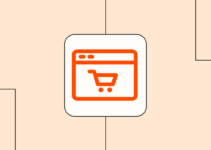Consumers now care deeply about sustainability. More than ever, they’re making choices that show a clear priority for products, brands, and services that align with environmental values. It’s not just about buying green products; it’s about holding companies accountable for their practices. Today’s buyers want more transparency, more responsibility, and real action from companies they support.
Brands that ignore this are risking more than just profit. They face a potential backlash that could harm their reputation and customer loyalty. So, the big question is: Are companies adapting to the demands of an audience that increasingly prioritizes environmental responsibility?
Key Points
- Many consumers now prioritize eco-friendly products.
- Companies are often slow to adapt to these shifting values.
- Sustainable practices can make a huge difference in brand loyalty.
- Failure to adapt may lead to loss of market relevance.
- Transparency is crucial for brand trust.
A New Wave of Shoppers

Source: rakuten.today
The demand for sustainable products is no longer a niche trend. Modern consumers want their purchases to reflect a broader commitment to the environment. Eco-conscious shoppers expect companies to do more than just slap a “green” label on their products. They demand tangible evidence that the products are made responsibly, with a minimal impact on the planet. Even better? Brands that go above and beyond to offset their environmental footprint get the loyal customer base they need.
Today, it’s common to see brands using recyclable materials, sourcing ethically, and cutting down on plastic. To see just how much public focus there is on stories around sustainability and ethical consumption pay a visit to https://itsonsitetv.com/.
The Corporate Catch-Up Game
Despite the push from consumers, many companies have struggled to keep pace with the eco-conscious movement. Some have genuinely embraced the need for change, but others treat it more as a marketing strategy than a true shift in practice. Think of it like rushing to put up a “green” sign without actually planting the garden.
Several factors slow down businesses. Implementing real change costs money, demands logistical adjustments, and can affect profit margins. But those who have made the leap often see it pay off through brand loyalty and an improved reputation. Ultimately, half-measures won’t cut it with today’s consumers. The key is meaningful commitment.
Practical Steps for Brands
For companies willing to take the plunge, here are simple, impactful changes to meet eco-conscious demands:
- Switch to recycled or biodegradable packaging ─ Packaging is an easy starting point and shows visible effort.
- Source materials responsibly ─ Sustainable sourcing affects everything from raw materials to the final product quality.
- Invest in renewable energy ─ Using solar or wind energy can reduce operational costs over time and cuts emissions.
- Introduce product take-back programs ─ A take-back system lets customers return products, which can then be recycled.
- Improve transparency ─ Publish clear, honest data on environmental impacts to build trust with customers.
Companies that want long-term success can’t ignore these steps. Authenticity counts. Consumers are increasingly aware of superficial attempts at sustainability. A strong commitment from companies stands out in a world full of empty claims.
When Words Don’t Match Actions

Source: impakter.com
A significant number of brands lean on “greenwashing,” which only tricks consumers for so long. Greenwashing is the practice of misleading people into believing that a brand is doing more for the environment than it actually is. It’s a band-aid approach that only frustrates conscious shoppers who want genuine effort.
Consumers see through such strategies quickly. Brands that use vague terms without clear proof of their practices run the risk of alienating their audience. Reports on misleading claims are only a click away, and modern shoppers are more than willing to do their homework. For a brand, keeping up with eco-conscious demand means backing claims with solid proof.
Real-Life Examples of Change
Some companies stand as examples of genuine effort:
- Patagonia ─ A trailblazer, Patagonia has long incorporated sustainable practices. From promoting fair labor conditions to using recyclable materials, Patagonia remains a favorite among environmentally aware shoppers.
- Unilever ─ With numerous brands under its umbrella, Unilever set specific goals to cut down its carbon emissions and improve its packaging.
- Tesla ─ By producing electric vehicles, Tesla contributed to the shift in how consumers view energy consumption and personal transport.
Such examples illustrate the potential for impactful change in various sectors. Companies that prioritize sustainability in every area, not just in marketing, gain a level of respect and loyalty that superficial branding can never achieve.
Why the Slow Progress?
Why do some companies drag their feet? For many, the answer is cost. Real change requires significant investments, from updating factories to rethinking entire supply chains. Some fear that initial losses may outweigh the potential gains. Others worry about losing customers who might resist price increases tied to sustainable practices.
In truth, those fears are becoming outdated. More consumers willingly pay extra for eco-friendly products. Brands that make excuses risk being left behind, especially as their competitors step up to meet the demands of a more environmentally aware customer base.
What the Future Holds

Source: directorsbox.co.uk
It’s clear that this movement isn’t going anywhere. The push toward eco-friendly business practices is becoming a global expectation. The companies that respond proactively have a better chance of long-term survival and growth. They’ll continue to attract a younger generation of shoppers who place a high value on environmental responsibility.
Soon enough, sustainability won’t be an option. It will be a requirement.
FAQS
How can I tell if a company is genuinely eco-conscious?
Look for third-party certifications like Fair Trade or B Corp, and review the brand’s sustainability reports and transparent sourcing practices.
What’s the impact of my eco-friendly choices on the environment?
Every eco-friendly purchase reduces resource depletion, limits pollution, and encourages more companies to adopt sustainable practices.
How do I find companies committed to sustainability?
Use resources like certified eco-label directories, browse companies’ sustainability pages, and check online reviews that focus on environmental practices.
Do eco-conscious practices improve a company’s reputation?
Yes, sustainable practices strengthen customer loyalty, improve brand image, and appeal to eco-minded consumers, benefiting both company and environment.
How can companies effectively implement eco-conscious supply chains?
Effective eco-conscious supply chains involve sourcing ethical materials, reducing waste, investing in renewable energy, and fostering fair labor practices.
What are the most innovative sustainable practices businesses use today?
Leading companies use biodegradable packaging, carbon-neutral production, closed-loop systems, and technology to track and reduce emissions in real time.







